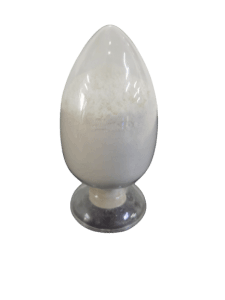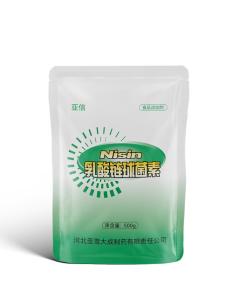

|
- Createtime: 2023-03-06
- Updatetime: 2024-10-18

Product name: ε-polylysine hydrochloride
Chemical formula: [C6H12N2O?HCl]n?H2On=25~35
Molecular weight: 4130~5776
Molecular structure:
ε-Polylysine hydrochloride (ε-PLhcl) is a homopolymer composed of 25-35 L-lysine residues produced by fermentation of Streptomyces albulus. It has broad-spectrum antibacterial activity against gram-positive and gram-negative bacteria, yeast, and fungi. It is heat-stable, water-soluble, and widely used in various food products. It can be digested and absorbed by the human body, and is broken down into essential L-lysine without any side effects.
Features:
- Efficient and broad-spectrum antibacterial agent, with good inhibitory effect on gram-positive and gram-negative bacteria, fungi, yeast, and viruses.
- Good thermal stability.
- Works well in the pH range of 3-9, suitable for most foods.
- Water-soluble, with a clear solution and no odor, convenient to use without affecting the original color and flavor of the food.
- High safety, can be degraded into essential L-lysine in the body after consumption, without any toxic side effects.
SCOPE OF APPLICATION
ε- Polylysine hydrochloride Introduction
ε-polylysine hydrochloride (ε-PLhcl) is a unique and effective antibacterial agent that has gained increasing attention in the food industry. It is a homopolymer composed of 25-35 L-lysine residues produced by fermentation of Streptomyces albulus. This article aims to provide a comprehensive introduction to ε-PLhcl, including its properties, applications, and future prospects.
Properties of ε-PLhcl
ε-PLhcl has several unique properties that make it an attractive antibacterial agent for use in food products. One of its most significant features is its broad-spectrum antibacterial activity against gram-positive and gram-negative bacteria, yeast, and fungi. This makes it suitable for use in a wide range of food products, including meat, dairy, and baked goods.
Another key property of ε-PLhcl is its thermal stability. It can withstand high temperatures without losing its antibacterial activity, making it suitable for use in food products that require high-temperature processing. Additionally, it is water-soluble and has a clear solution with no odor, making it convenient to use without affecting the original color and flavor of the food.
Applications of ε-PLhcl in the Food Industry
ε-PLhcl has a wide range of applications in the food industry, primarily as a preservative and antibacterial agent. It is commonly used in meat products, such as sausages and ham, to inhibit the growth of bacteria and prolong shelf life. It is also used in dairy products, such as cheese and yogurt, to prevent the growth of spoilage microorganisms.
In baked goods, ε-PLhcl is used to inhibit the growth of mold and yeast, preventing spoilage and extending the shelf life of the product. It can also be used in sauces and dressings to prevent bacterial growth and maintain product quality.
Future Prospects of ε-PLhcl
The use of ε-PLhcl in the food industry is expected to continue to grow due to its unique properties and broad-spectrum antibacterial activity. As consumers demand more natural and safe food products, ε-PLhcl is a viable alternative to traditional chemical preservatives.
Research is ongoing to explore new applications of ε-PLhcl in the food industry, including its use in food packaging materials to prevent the growth of bacteria and extend the shelf life of packaged foods. It is also being investigated as a potential treatment for bacterial infections in humans due to its broad-spectrum antibacterial activity.
Conclusion
ε-Polylysine hydrochloride is a unique and effective antibacterial agent with broad-spectrum activity against gram-positive and gram-negative bacteria, yeast, and fungi. Its thermal stability, water solubility, and clear solution with no odor make it an attractive preservative for use in a wide range of food products. The future prospects of ε-PLhcl in the food industry are promising, and ongoing research is exploring new applications and potential uses for this versatile antibacterial agent.
-
2023-03-13
How is Nisin produced?
Nisin is a naturally occurring antimicrobial peptide that is produced by certain strains of bacteria, particularly Lactococcus lactis. The process of nisin production involves the ...
MORE -
2023-03-14
How is ε-Polylysine hydrochloride produced?
ε-Polylysine hydrochloride, also known as ε-PL or Poly(ε-lysine), is a natural biopolymer composed of ε-lysine monomers. ε-PL is known for its antimicrobial properties and has...
MORE
- Tel:+8618231198596
- Whatsapp:18231198596
- Chat With Skype







